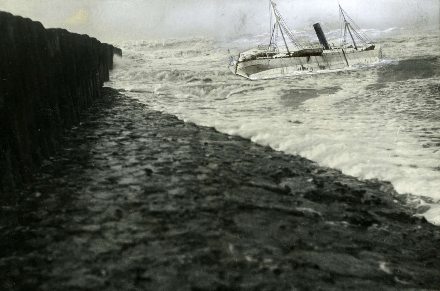Photo collection illustrated magazine Het Leven (1906-1941) > Lies
During the first years of the magazine the ‘truthfulness' of the photography was repeatedly emphasized. This was particularly the case for illustrations of news items that had often been used until the beginning of the 1900s. In Het Leven no. 1 published in 1915 the editors wrote, "Because of their level-headedness, and particularly their craving for truth, the Dutch public is not interested in drawings when looking at illustrations. It is ‘only' a drawing and ‘you can draw anything' are expressions often heard. Photos are everything. The indisputable authenticity, impartiality and honesty characteristic of photos and their unequalled strength, unchallengeable power as evidence will never be attained by drawings as reality is flatly opposed to imagination in drawings...".
The captions were often brief but strongly decisive in the understanding of photos. It appeared from the articles that the public were regularly already aware of the background to the news from the newspapers as they were published seven days a week. A weekly magazine such as Het Leven therefore had to rely particularly on catching photos, something newspapers could not compete with at the time.
In this early period, if photos did not meet the requirements, drawing techniques did the trick. When, for example, the steamship ‘Solo' was cast ashore near Hoek van Holland by a heavy storm in 1911, two photos were combined to form one nice front page picture: a photo of the ship was glued on to a photo of a groyne. Seeing that the disaster took place at night and the relatively insensitive films of the time could not capture this, the editors went for the scissors, glue and paint. If the image was not convincing, the caption could modify the meaning. Under the photo in question the caption read: ‘The steamship ‘Solo' in danger at Hoek van Holland'; the photo, however, was taken after the ship ran aground!
The use of paint on photos was not unusual at the time and mostly of a practical nature. Printers used so-called retouching paint to adjust the contrast, thereby avoiding poor reproduction of the photos and omission of details in the printed matter. The paint was also used to cover parts of photos, for example, around the heads of people, resulting in a portrait photo without distracting elements. The photo collection of Het Leven shows many examples of such retouching.

